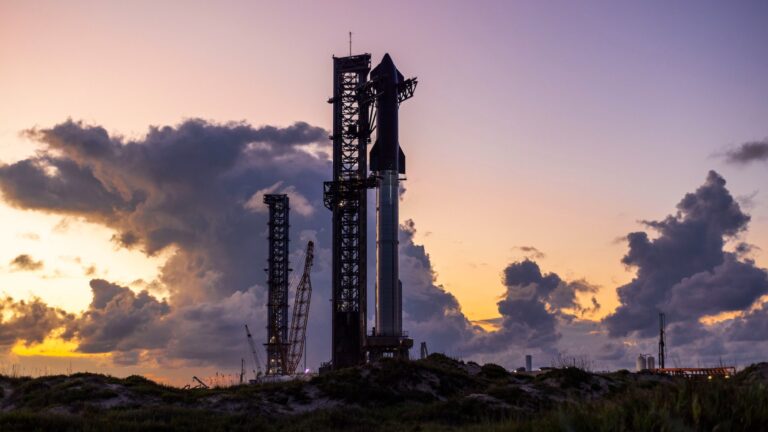
Extensive upgrades
SpaceX teams in Texas have beefed up the launch tower and catch arms in the last few months, working around the clock to add structural stiffeners and test the arms’ load-carrying capability.
“Extensive upgrades ahead of this flight test have been made to hardware and software across Super Heavy, Starship, and the launch and catch tower infrastructure at Starbase,” SpaceX said. “SpaceX engineers have spent years preparing and months testing for the booster catch attempt, with technicians pouring tens of thousands of hours into building the infrastructure to maximize our chances for success.”
It will take about seven minutes for the Super Heavy booster to climb to the edge of space, separate from the Starship upper stage, and return to Starbase for recovery. While the booster comes back to the ground, Starship will fire its six engines to accelerate to near orbital velocity, fast enough to complete a half-lap around Earth before gravity pulls it toward an atmospheric reentry over the Indian Ocean.
This is a similar trajectory to the one Starship flew in June, when it survived a fiery reentry for a controlled splashdown. It was the first time SpaceX completed an end-to-end Starship test flight.
After analyzing the results from the June mission, SpaceX engineers decided to rework the heat shield for the next Starship vehicle. The company said its technicians spent more than 12,000 hours replacing the entire thermal protection system with new-generation tiles, a backup ablative layer, and additional protections between the ship’s flap structures.
Onboard cameras showed fragments of the heat shield falling off Starship when it reentered the atmosphere in June.
“This massive effort, along with updates to the ship’s operations and software for reentry and landing burn, will look to improve upon the previous flight and bring Starship to a soft splashdown at the target area in the Indian Ocean,” SpaceX said.




















+ There are no comments
Add yours